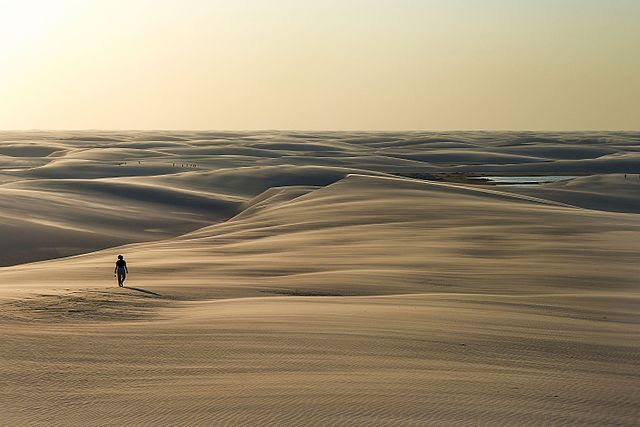What
In a world governed by rising temperatures, uncontrollable wildfires, decade long droughts and extreme weather, the image of a future desert planet is evoked on a routine basis. Hypothesizing that the notion of 'future desert' acts as one of two master tropes of the Anthropocene (the other being the flood), the monograph Future Desert: Wasteland Imaginaries of the Anthropocene will therefore explore the cultural significance of the desert in imagined futures of catastrophic collapse caused by anthropogenic change. The central research question is thus: if 'the Anthropocene itself can usefully be understood as a science fiction trope', how and why has the image of a 'future desert' come to stand as a trope for anthropogenic change in general and for global warming in particular?
Why
The monograph will build its methodological foundations on Elizabeth DeLoughrey's recent decolonial/ecologist work on 'allegory' as being 'the fundamental rhetorical mode for figuring the planet as well as the historical rift between part and whole that is symbolized by the Anthropocene'. In addition to this, the intersection of science fiction studies with disaster studies through imaginaries of worst case scenarios is significant, as is the manner in which 'science fiction infuses science and vice versa' through futurist projections of present and potential technologies and their latent dystopian/utopian outcomes.
How
While literary in nature in its focus on narrative and allegory, the project is willfully eclectic in its selection of 'texts' analyzed. Including examples from literature over film, computer games, journalism, photography and fine arts that employ 'future desert' imagery in order to conceptualize forms of potential planetary catastrophic collapse, the monograph will offer a comprehensive analysis of a multi-generic corpus of material that covers a wide range of scenarios of catastrophic anthropogenic change, e.g. global warming, nuclear warfare, pollution, or deforestation.
SSR
The monograph will offer a much-needed revision of the idea of the desert as more than a void space in the colonial and imperialist periphery, and rather as a central trope for future regional as well as planetary collapse. Second, the monograph will specifically enrich a growing and urgently needed Anthropocene vocabulary, as well as more generally raise awareness into the importance of narrative and allegory in environmental discourse.
